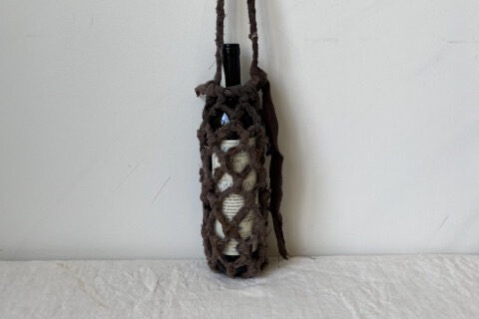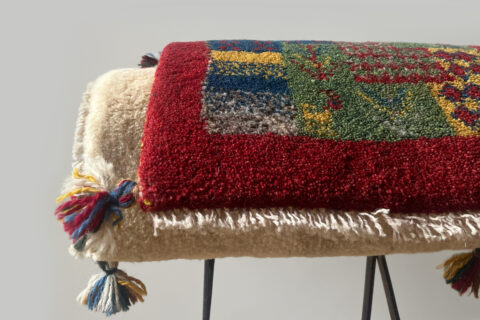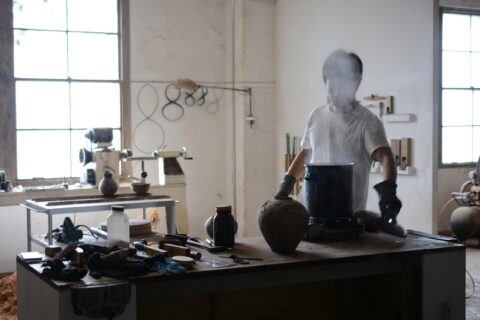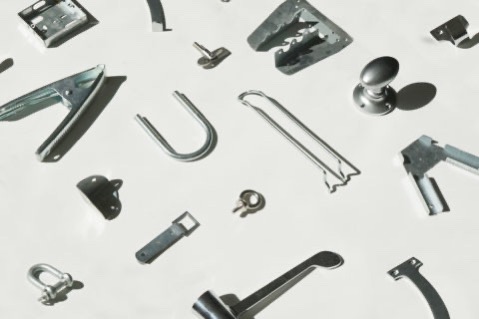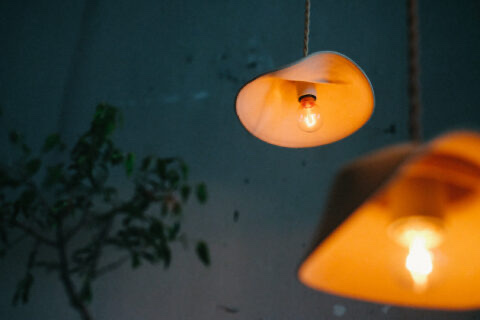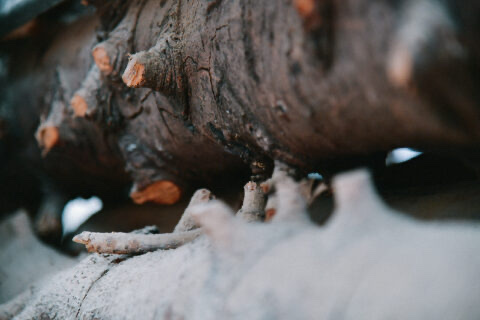
家裡有好幾個茶筒,一個是不知從何而來的舊物,另外兩個則是開化堂的出品。銅製那個較新,是朋友送的禮物,另一個由馬口鐵製成,是丈夫的藏品,年份不詳,但應該是開化堂很早期時製作的。開化堂的製品,使用時間一久,不管是哪種物料,都會氧化,原來閃閃發亮的色彩會褪去,銅色化為棕色,而馬口鐵,本來是銀色的,則變得灰黑,而這也是人們愛戴開化堂製品的原因之一(另一個原因,當然是其巧妙的造功,蓋子緩緩自動落下時,著實教人心動)。
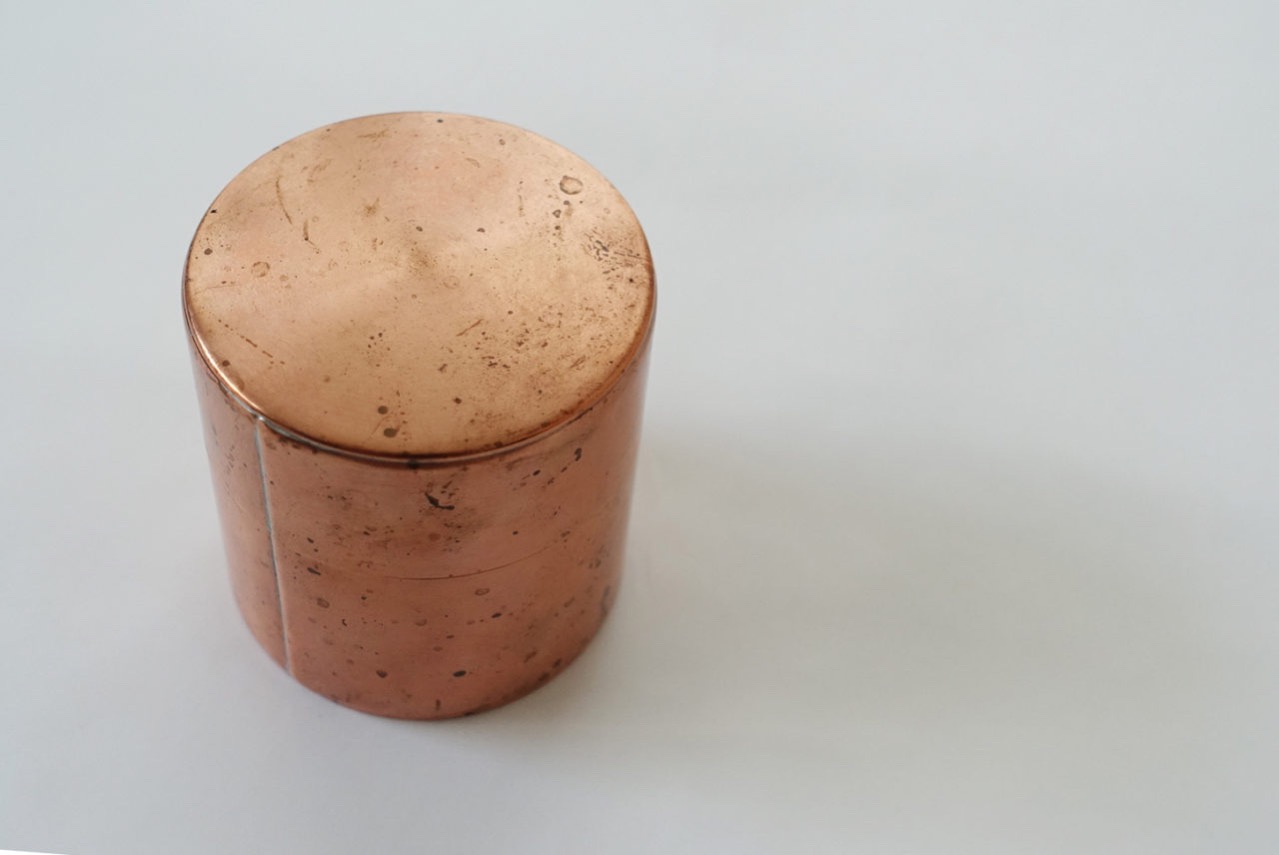
有一陣子我也很迷戀這種表情會隨著時間變化的製品,然而最近卻感到,銅或馬口鐵,表情最終其實都大同小異,不如陶器或鐵,會因氣候或使用方式不同,而外表的變化也不同。既然如此,何不先加工,加速它們蒼桑,讓它們的樣貎在推出市面時,便停留在工藝們認為最洽當的階段呢?不過,這或許就是工藝可愛之處,工匠們的主張不如藝術家多,不斷定金屬氧化至哪個程度才算美,作品每個階段的美感,都交給使用者好好經歷。

I have a few tea caddies at home. One of them is a second-hand item of unknown origin, the other two are from a shop called Kaikado. The newer one that is made of copper was a gift from a friend, the other one that is made of tin is my husband’s collectible. Although I am not sure of which year it was made, it is very likely to be one of the earliest items produced by Kaikado. Every piece of Kaikado product gets oxidized after prolonged usage. Regardless of the material, the color of the originally shiny surface would slowly fade away. The copper canny is now brownish, the tin canny has turned from silver to dark gray. People love Kaikado for how their products change color. (Of course, people also love the impressive craftsmanship of Kaikado; it is always a satisfying moment looking at the lid gently slides downward.)
I was earlier obsessed with objects that would transform with age, but then I realized that be it copper or tin, the change in their temperaments is pretty predictable. On the contrary, pottery and iron would change in various ways largely depending on its usage and the climate. If this is the case, why don’t we simply speed up the so-called aging process during manufacturing, so as to present them in the condition that the artisans find most optimum? This is perhaps the adorable nature of crafts. Artisans do not hold strong opinions like artists. Instead of defining which is the most beautiful state, they would rather leave it for the owners to experience the charisma of the item’s every single stage.

